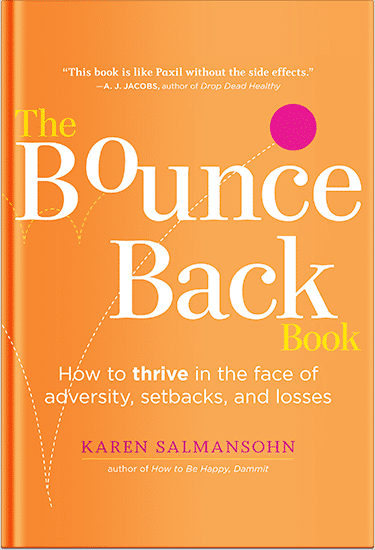 Crawl spaces are seriously one of the most overlooked areas in homes, yet they have massive impacts on moisture levels, indoor air quality, and your home’s overall structural stability. Most homeowners never think about what’s happening down there until problems start showing up upstairs.
Crawl spaces are seriously one of the most overlooked areas in homes, yet they have massive impacts on moisture levels, indoor air quality, and your home’s overall structural stability. Most homeowners never think about what’s happening down there until problems start showing up upstairs.
When crawl space issues finally surface, you’ll typically hear about two main solutions: encapsulation and ventilation. The problem is that most people don’t really know the differences between these approaches or which one actually makes sense for their specific situation and climate conditions.
Choosing the wrong solution can leave you dealing with ongoing problems like persistent mold growth, pest infestations, or those crazy high energy bills that seem to come out of nowhere. Professional contractors at crawlspacebrothers.com regularly help homeowners navigate this decision by evaluating specific conditions and recommending appropriate solutions.
What encapsulation involves, how traditional ventilation works, the real pros and cons of each approach, and guidance for determining when one solution makes more sense than the other helps you make informed decisions about protecting your home.
What Is Crawl Space Encapsulation?
Crawl space encapsulation involves completely sealing off your crawl space from outside air and moisture using heavy-duty vapor barriers on walls, floors, and sometimes ceilings. This creates a controlled environment that’s isolated from exterior humidity, temperature fluctuations, and moisture intrusion from surrounding soil.
The process includes sealing all existing vents, installing proper insulation, and addressing any air leaks that could compromise the sealed environment. Most encapsulation systems also include dehumidification equipment that maintains optimal humidity levels year-round without relying on outside air circulation.
Benefits include dramatic moisture reduction that prevents mold and wood rot, significantly improved indoor air quality throughout your home, and enhanced energy efficiency because your HVAC system isn’t working against uncontrolled outside air infiltration. Encapsulation essentially turns your crawl space into conditioned space that supports rather than undermines your home’s comfort systems.
The Case for Crawl Space Ventilation
Traditional crawl space ventilation relies on outside airflow to reduce moisture levels by creating cross-ventilation that theoretically carries humid air away from the space. This approach assumes that outside air is drier than crawl space air and can effectively remove excess moisture naturally.
Ventilation works better in certain climates with consistently low humidity levels where outside air can actually help dry out crawl spaces rather than adding moisture. In these specific conditions, properly designed ventilation systems can provide adequate moisture control without the expense of full encapsulation.
The upfront costs are significantly lower than encapsulation because you’re essentially installing vents and fans rather than completely sealing and conditioning the space. However, this approach carries risks including uncontrolled moisture during humid seasons, increased pest access, and substantial heat loss that affects your home’s energy efficiency.
Comparing Costs and Long-Term Effectiveness
Encapsulation requires higher upfront investment because you’re installing vapor barriers, insulation, sealing systems, and dehumidification equipment that transform your crawl space into controlled environment. However, the long-term energy savings and reduced maintenance costs often provide better return on investment over time.
Ventilation systems cost less initially but typically require ongoing maintenance, seasonal adjustments, and may not provide adequate moisture control during humid weather periods. You might find yourself dealing with recurring mold problems, pest issues, or energy inefficiency that adds up over years of ownership.
The better ROI usually comes from encapsulation in most climates because it provides consistent performance regardless of weather conditions while reducing energy costs, preventing moisture-related damage, and improving your home’s overall durability and indoor air quality for decades rather than just managing symptoms seasonally.
Which Solution Works Best for Your Home?
Climate considerations play huge roles in determining the best approach, with encapsulation typically working better in humid regions where outside air contains more moisture than you want in your crawl space. Ventilation might work in consistently dry climates where outside air actually helps remove moisture.
The age and condition of your home affects which solution makes sense because newer homes with better construction might handle ventilation adequately, while older homes with more air leaks and structural issues often benefit more from the comprehensive protection that encapsulation provides.
Existing basement or crawl space problems like persistent moisture, mold growth, or pest infestations usually indicate that ventilation isn’t providing adequate protection and encapsulation might be necessary. Professional evaluation helps determine which approach addresses your specific conditions rather than applying one-size-fits-all solutions.
Conclusion
Encapsulation provides comprehensive, airtight protection that controls moisture regardless of outside conditions, while ventilation offers airflow-based moisture management that works only under specific climate conditions. Neither approach works well when improperly designed or installed for your specific situation.
The right choice depends heavily on your local climate patterns, budget considerations, and long-term goals for your home’s performance and durability. What works perfectly in Arizona might fail miserably in Georgia, and vice versa, making professional evaluation crucial for success.
Either solution, when properly designed and installed for your specific conditions, helps protect your crawl space, foundation, and indoor living environment from moisture-related problems. The key is matching the solution to your actual needs rather than choosing based solely on cost or convenience.
P.S. Before you zip off to your next Internet pit stop, check out these 2 game changers below - that could dramatically upscale your life.
1. Check Out My Book On Enjoying A Well-Lived Life: It’s called "Your To Die For Life: How to Maximize Joy and Minimize Regret Before Your Time Runs Out." Think of it as your life’s manual to cranking up the volume on joy, meaning, and connection. Learn more here.
2. Life Review Therapy - What if you could get a clear picture of where you are versus where you want to be, and find out exactly why you’re not there yet? That’s what Life Review Therapy is all about.. If you’re serious about transforming your life, let’s talk. Learn more HERE.
Think happier. Think calmer.
Think about subscribing for free weekly tools here.
No SPAM, ever! Read the Privacy Policy for more information.
One last step!
Please go to your inbox and click the confirmation link we just emailed you so you can start to get your free weekly NotSalmon Happiness Tools! Plus, you’ll immediately receive a chunklette of Karen’s bestselling Bounce Back Book!


 Crawl spaces are seriously one of the most overlooked areas in homes, yet they have massive impacts on moisture levels, indoor air quality, and your home’s overall structural stability. Most homeowners never think about what’s happening down there until problems start showing up upstairs.
Crawl spaces are seriously one of the most overlooked areas in homes, yet they have massive impacts on moisture levels, indoor air quality, and your home’s overall structural stability. Most homeowners never think about what’s happening down there until problems start showing up upstairs.